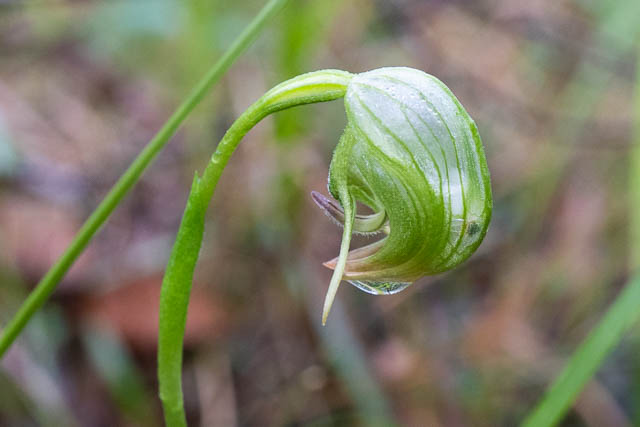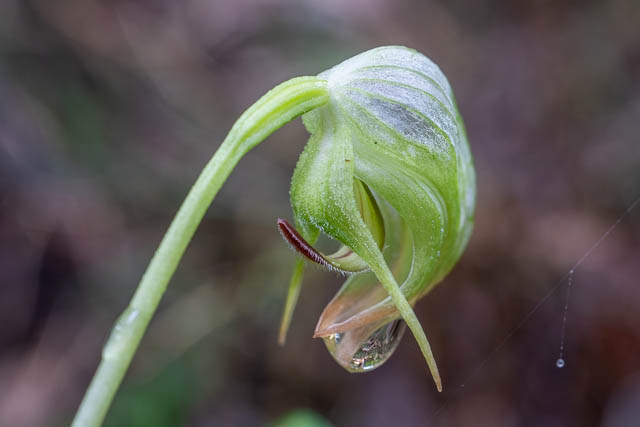I was enticed, by finding nice fungi at Bola Creek the day before, to undertake a second excursion to Bola Ck for a longer and better look.
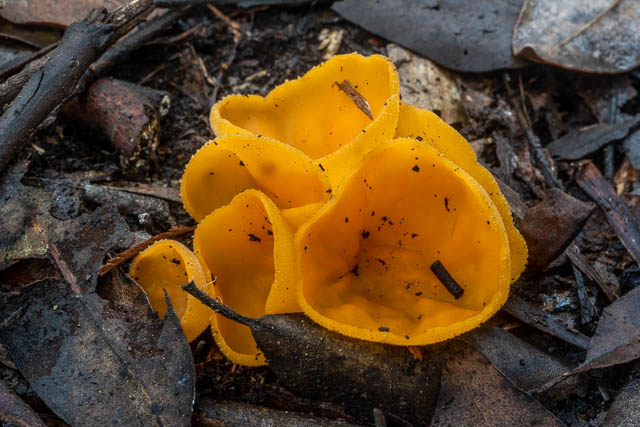
This time, I went by myself, walking down the Couranga Track from Waterfall Station. This also allowed me to examine a rock platform on the way fro Aboriginal engravings. I looked careful but could not see any signs – except perhaps some very faint sharping grooves. I went to another nearby rock outcrop, and found a circular shape that may have been engraved by Aboriginals.
At the Hacking River, I was able to cross on logs and rocks OK, and I was soon on the Forest Path. I walked quickly down to Bola Creek and started looking for fungi. I looked along the Walawurra Track to Bola Gully, near Lady Carrington Drive and later along the Forest Path before walking back out via the Couranga Track. Here is some to the fungi that I found. I will start with the waxcaps.
Hygrocybe aurantipes –
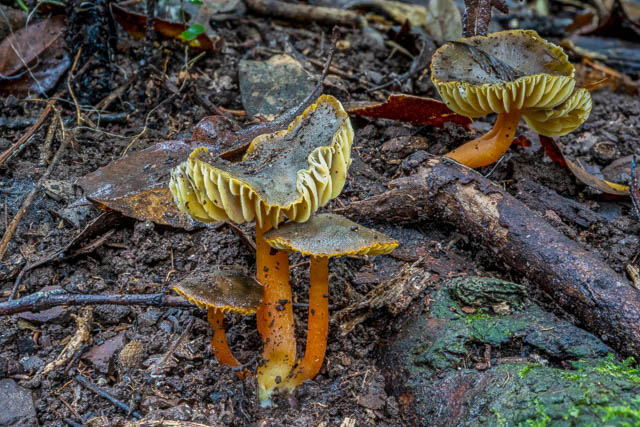
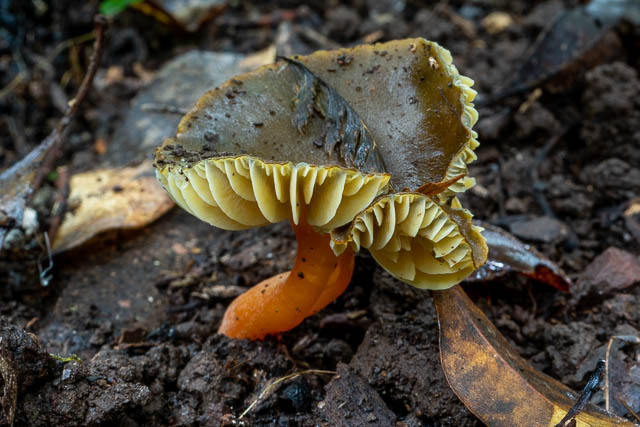
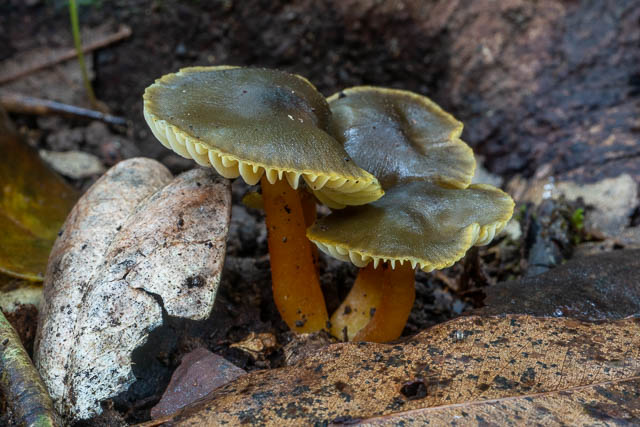
The above, are the same cluster I had seen the day before. The ones below are a separate group –
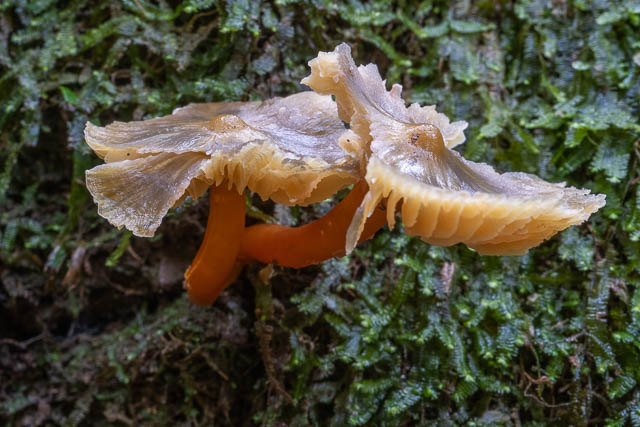
Hygrocybe sp. –
It is hard to identify the species here.
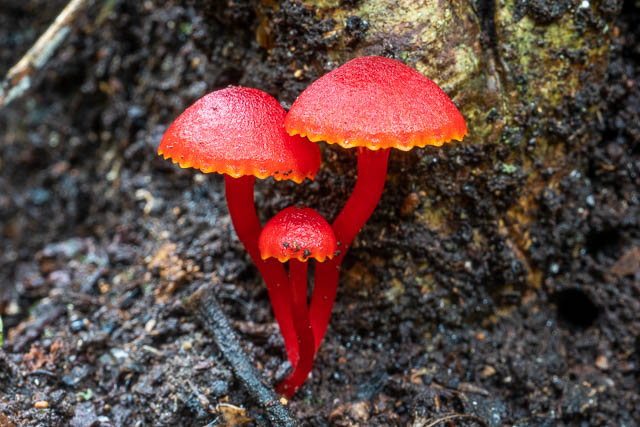
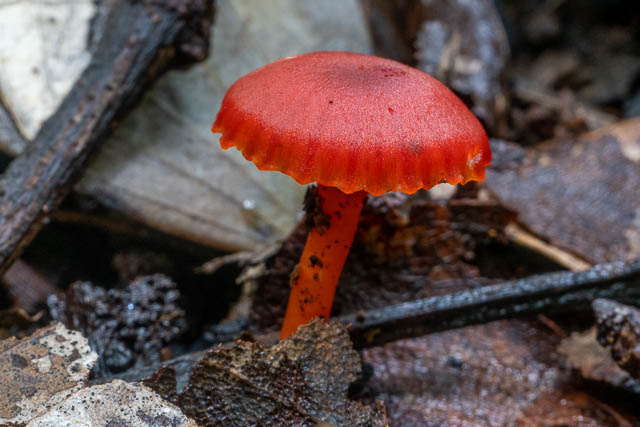
I think these two are Hygrocybe bolensis –
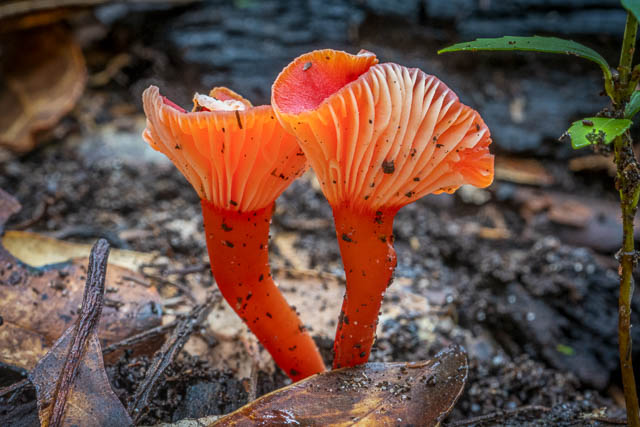
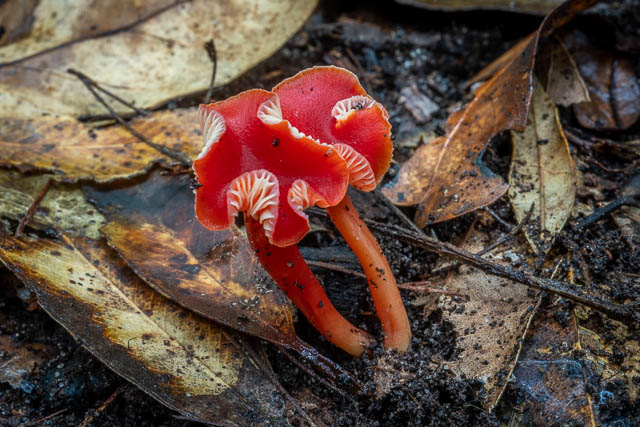
This may be Hygrocybe collucera –
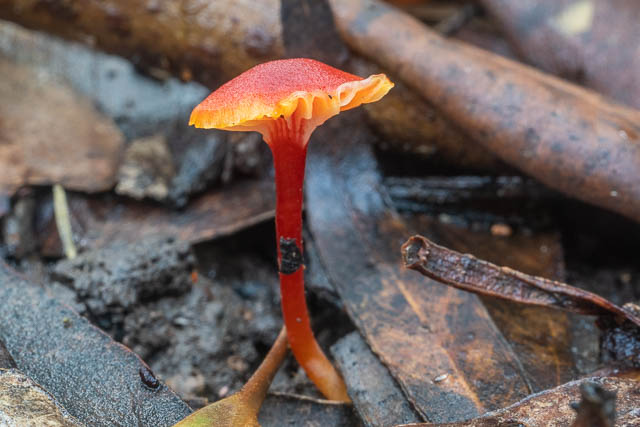
And perhaps Hygrocybe cantherellus –
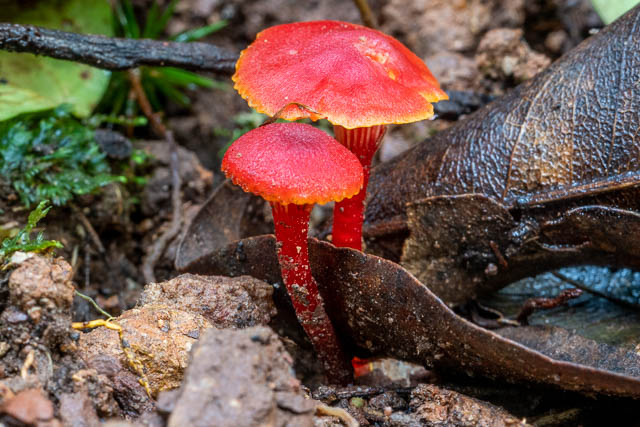
Hygrocybe sp.
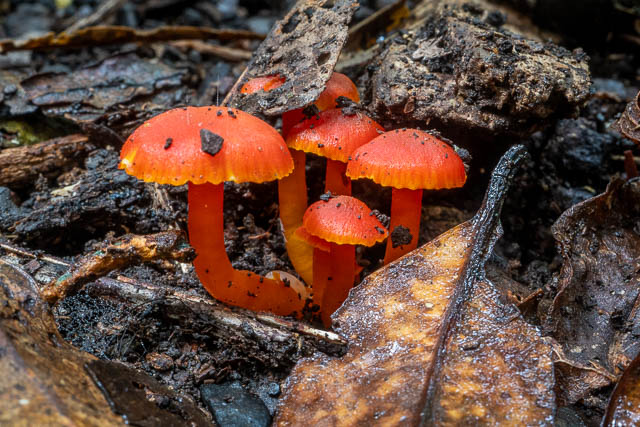
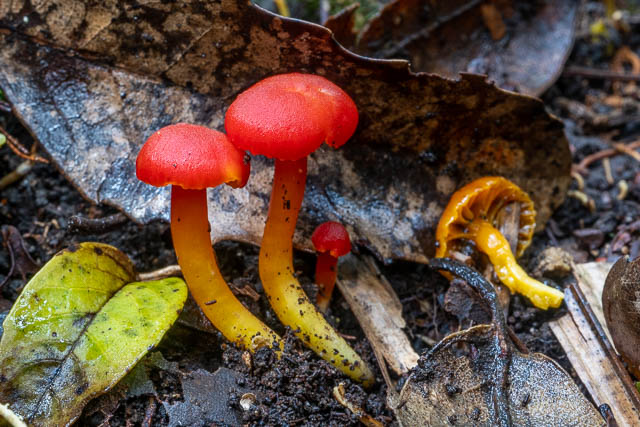
The photo above shows yellow stipes. I think this may be due to them being hidden under a leaf which I removed to take the photo. The top of the stipe, which was not under the leaf is the usual red.
Hygrocybe reesiae –
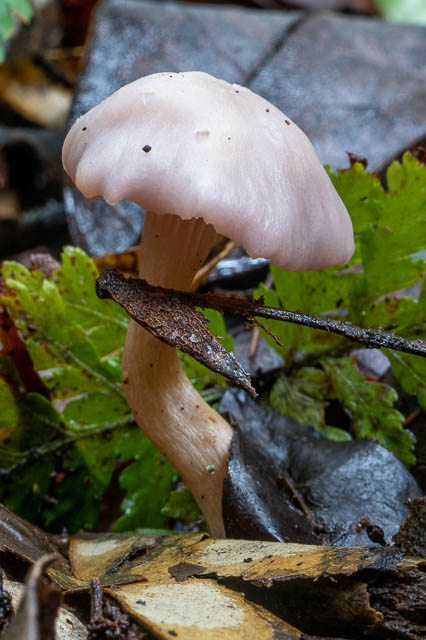
Hygrophorus involutus –
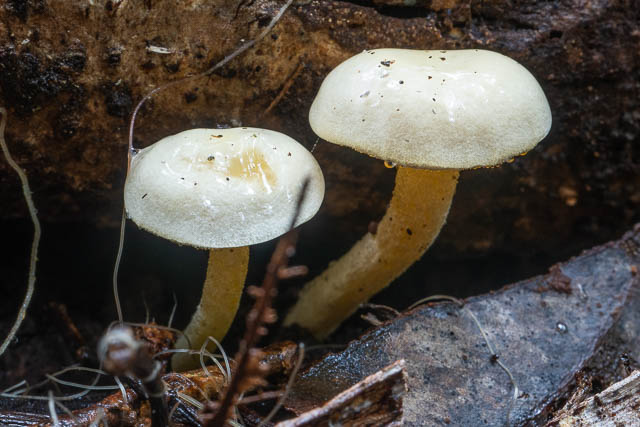
Hygrocybe austropratensis –
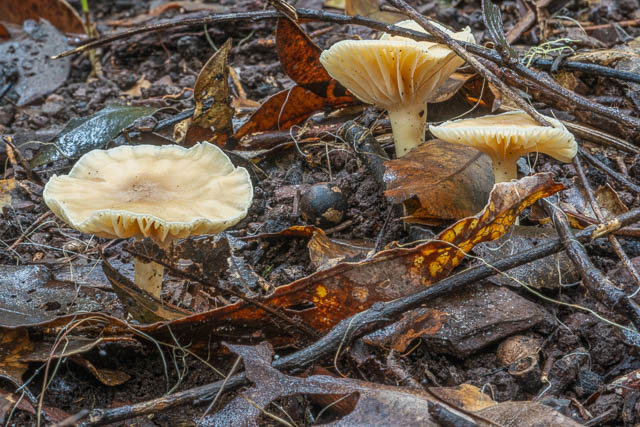
Hygrocybe aurantiopallens –
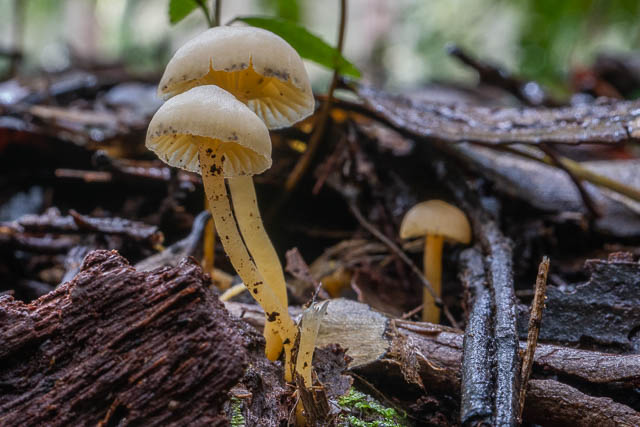
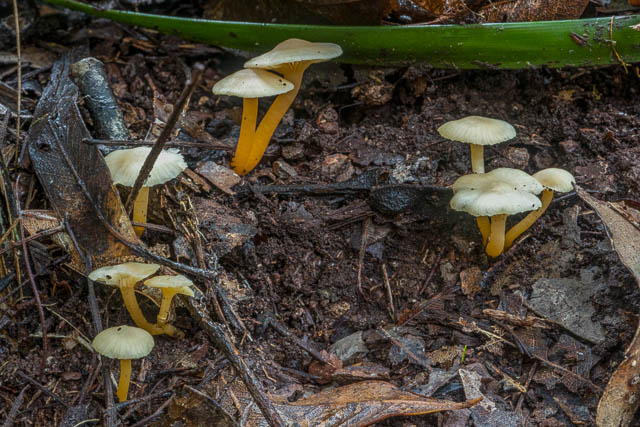
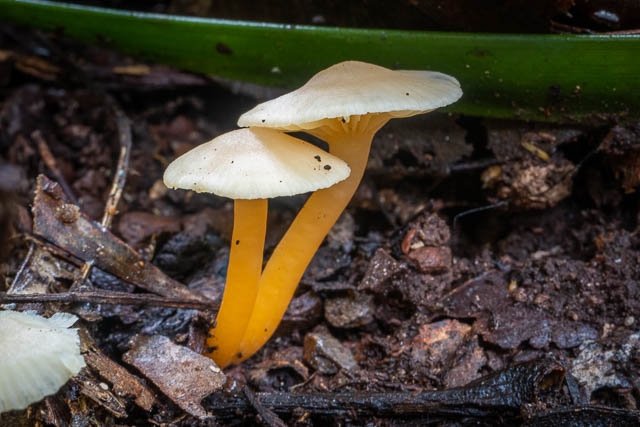
Gliophorus graminicolor –
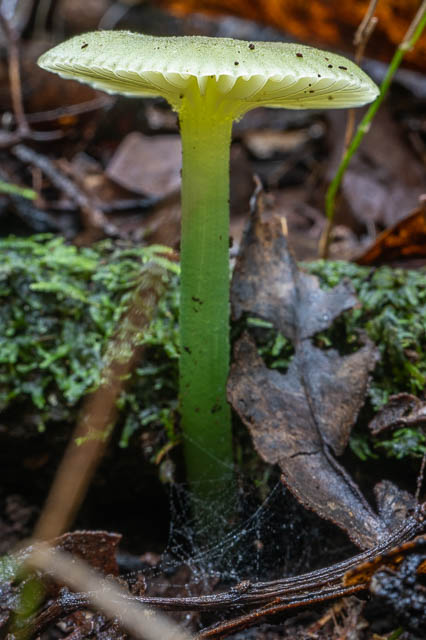
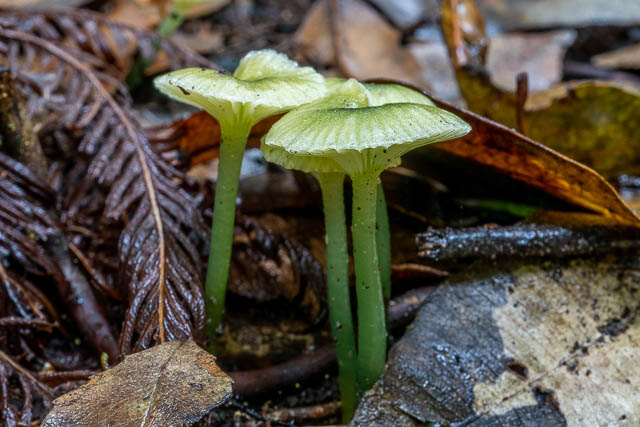
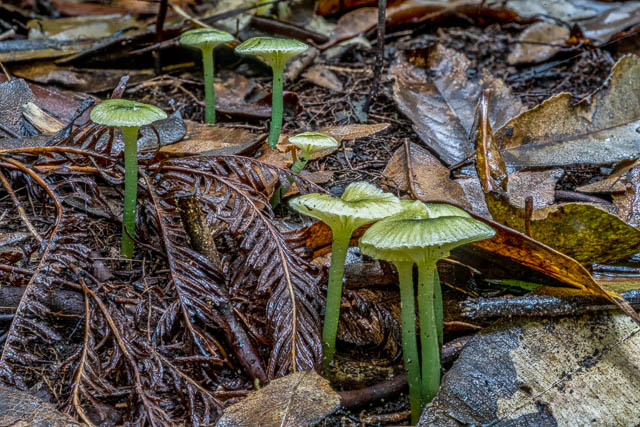
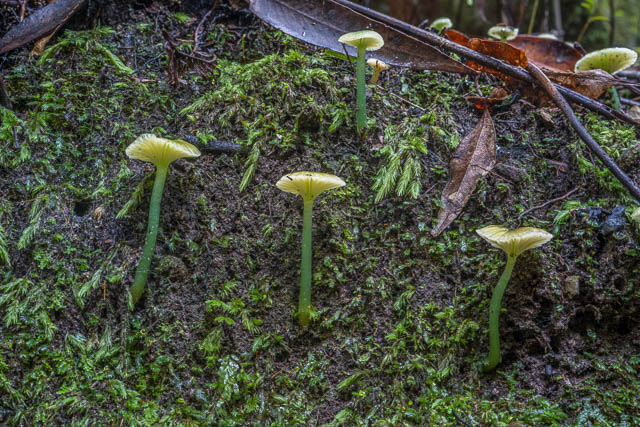
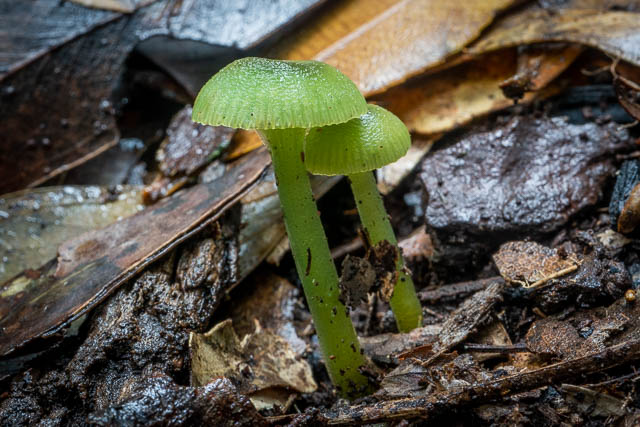
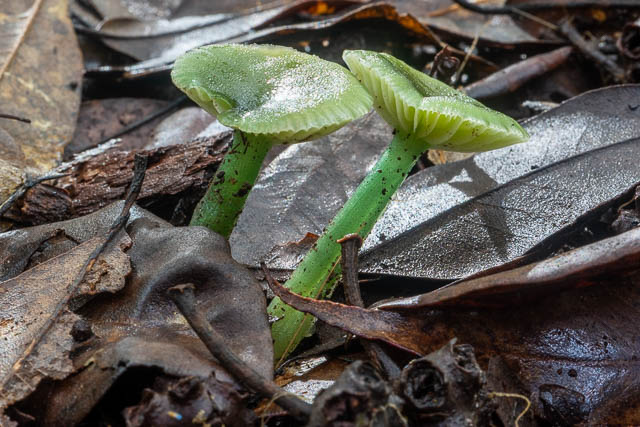
Gliophorus viridis –
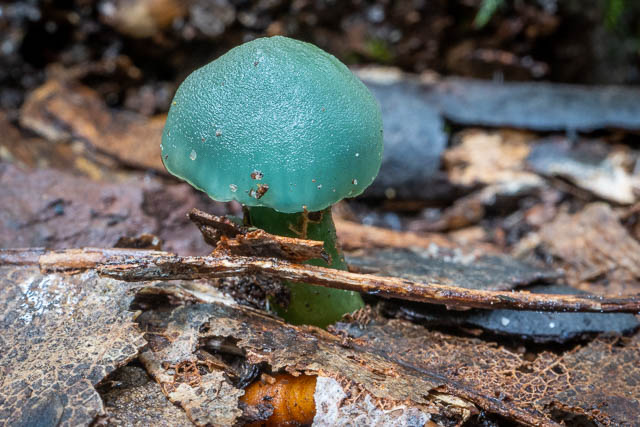
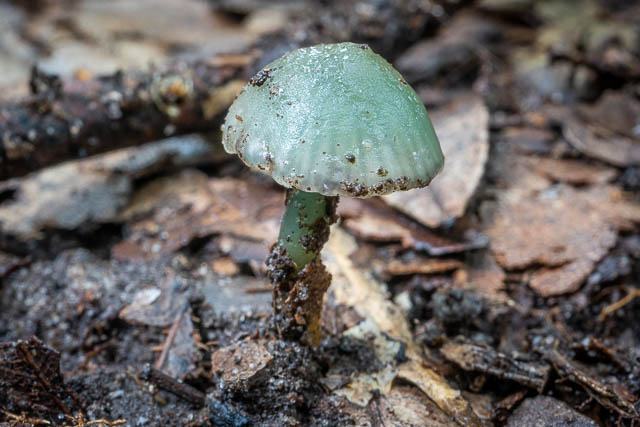
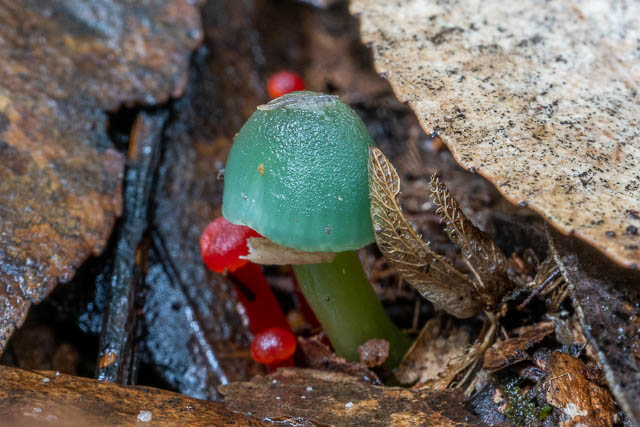
Hygrocybe anomala var. ianthinomarginata –
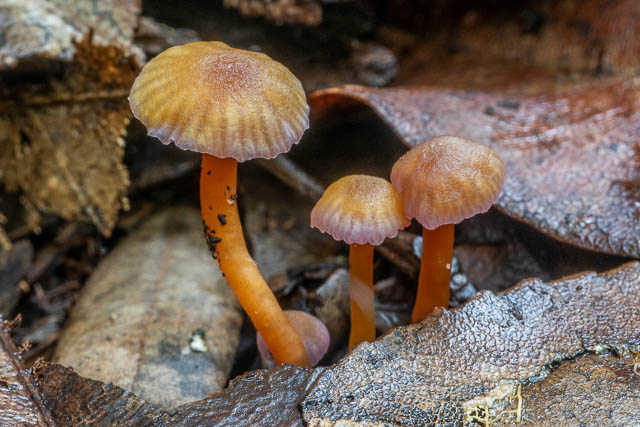
Hygrocybe anomala var. anomala –
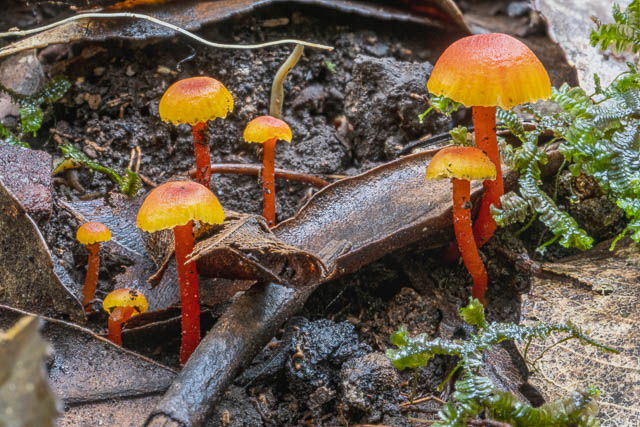
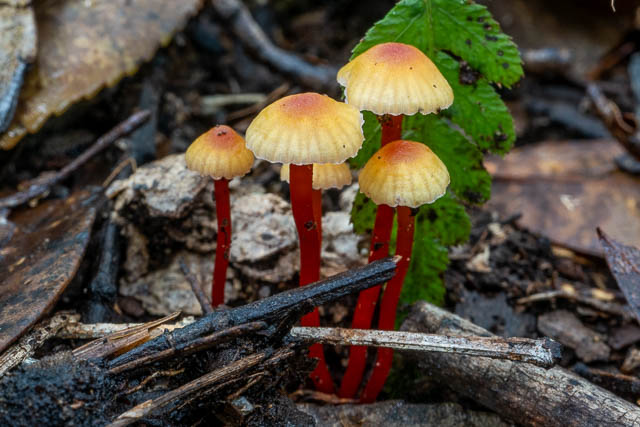
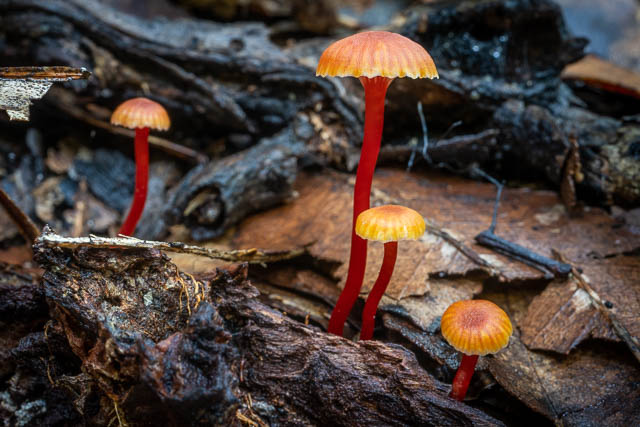
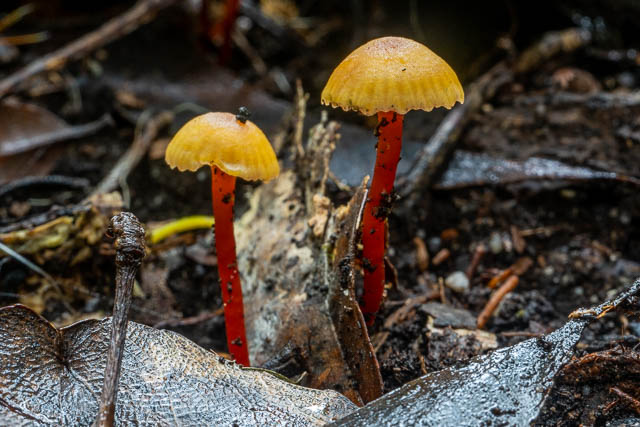
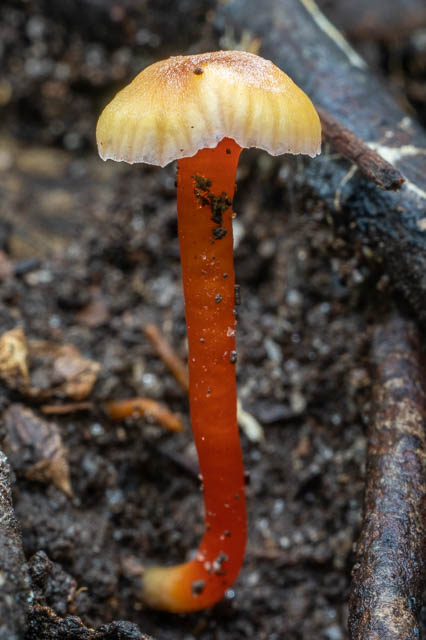
Porpolomopsis lewelliniae –
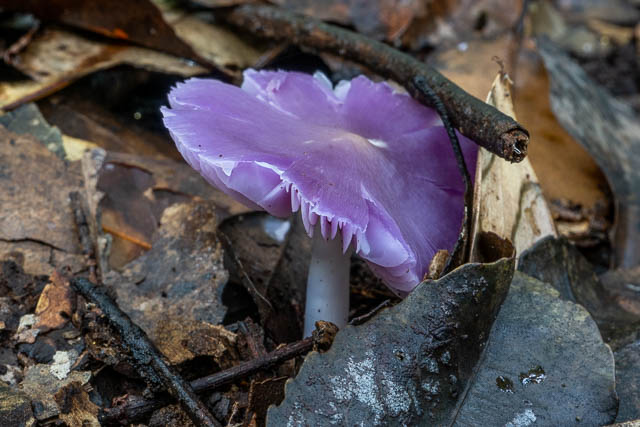
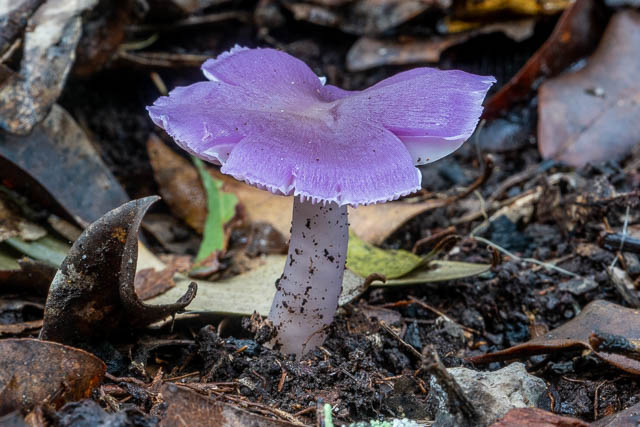
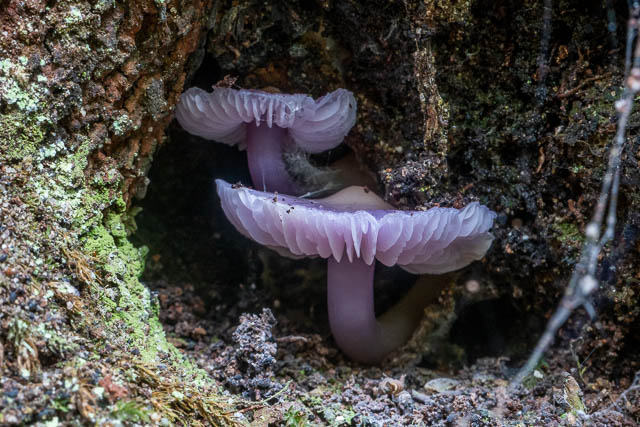
Hygrocybe leucogloea –
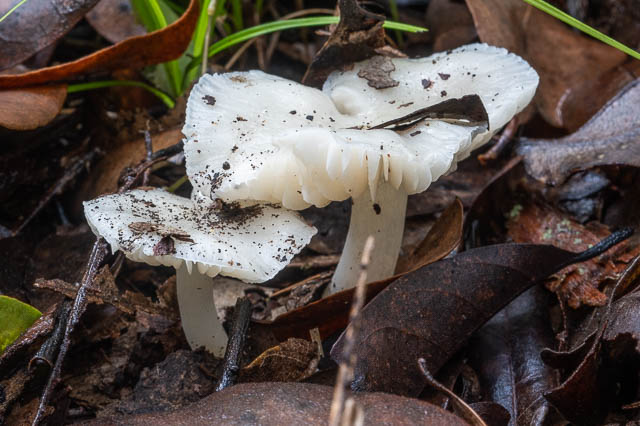
Hygrocybe virginea –
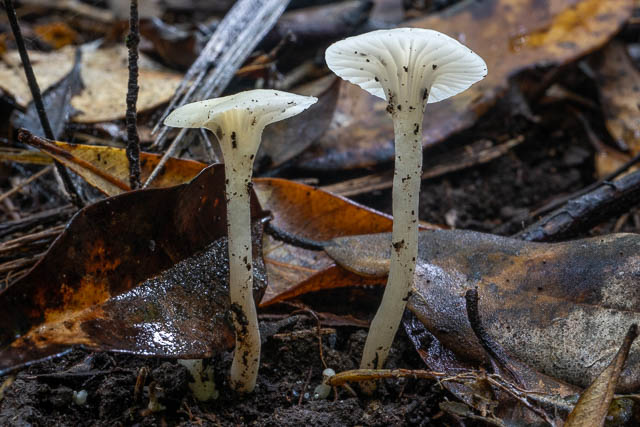
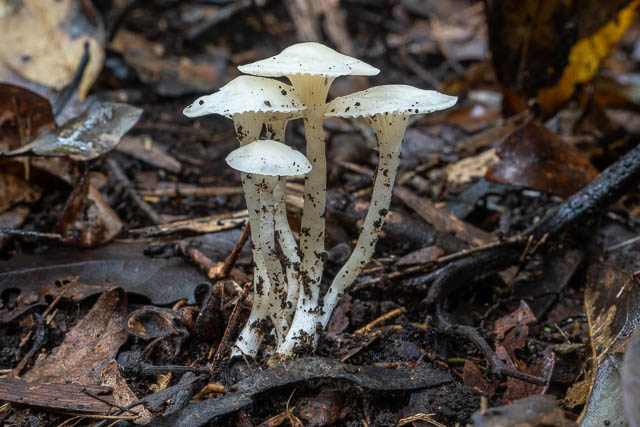
Humidicutis sp. –
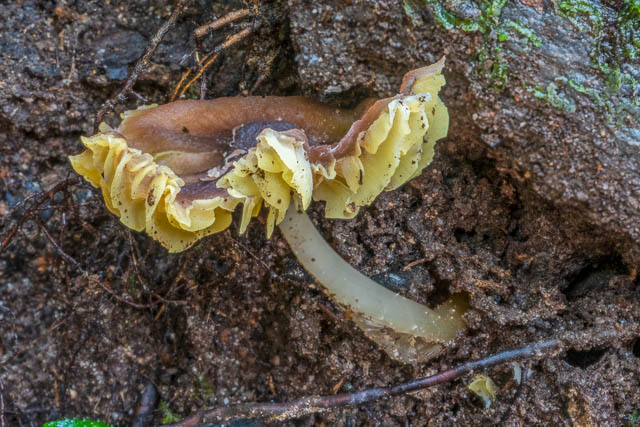
I think the specimen above, which is old and water damaged, is likely to be Humidicutis viridimagentea from the colour of the gills, stipe and cap. I took a photo of the gills that show the complex interconnections characteristics of that species. But this specimen lacks any of the bottle green colour in the cap. But from my experience of the species in Wolli Ck and Tasmania, I think as it ages the cap develops the magenta colour and can become completely magenta if conditions are suitable.
Humidicutis helicoides –
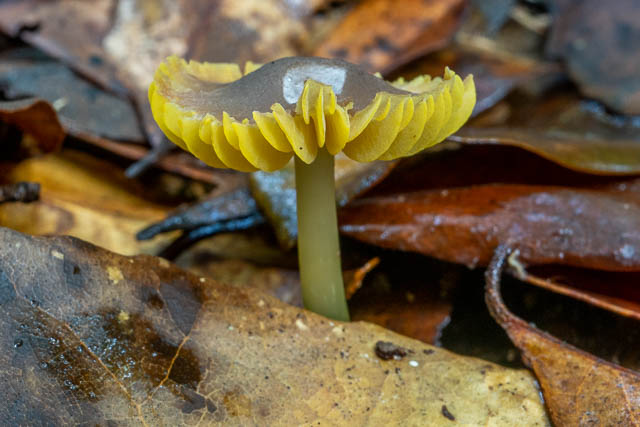
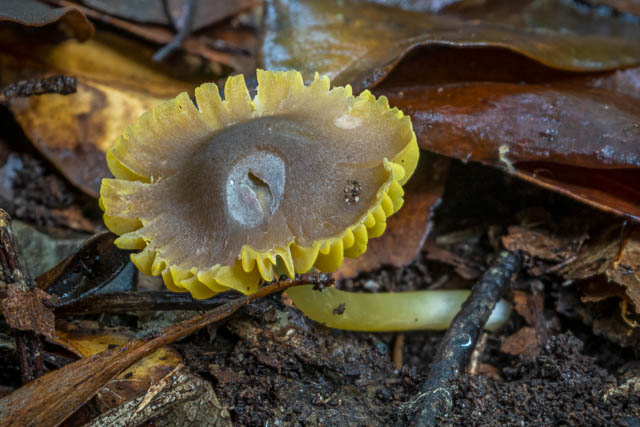
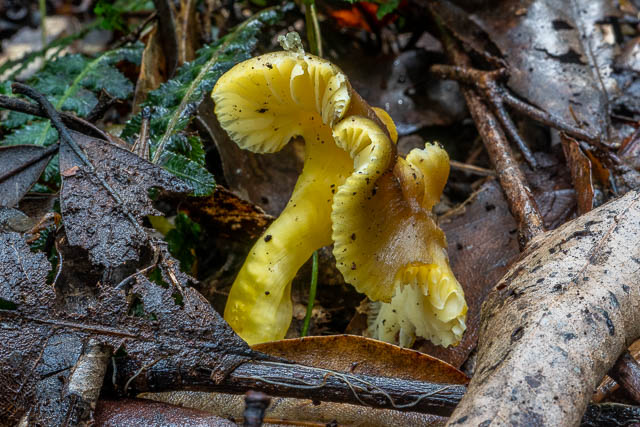
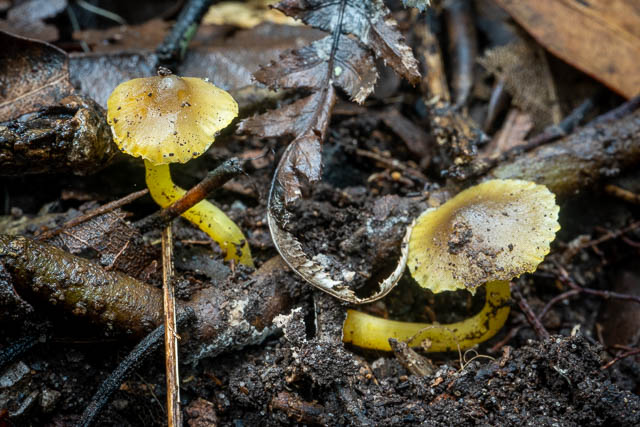
Gliophorus chromolimoneus –
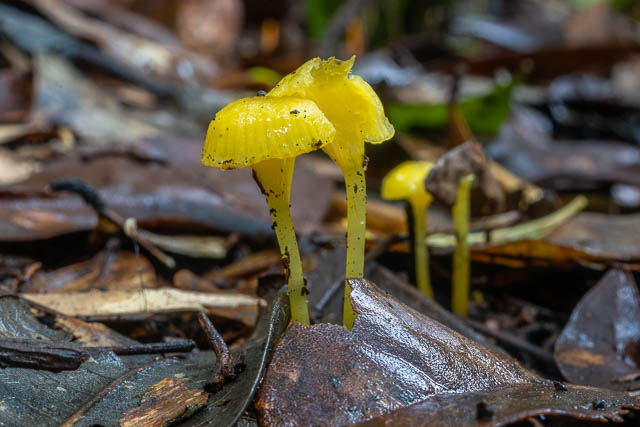
Camarophyllopsis sp.
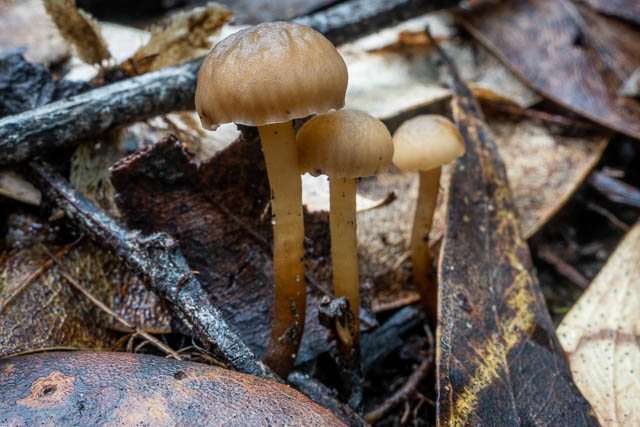
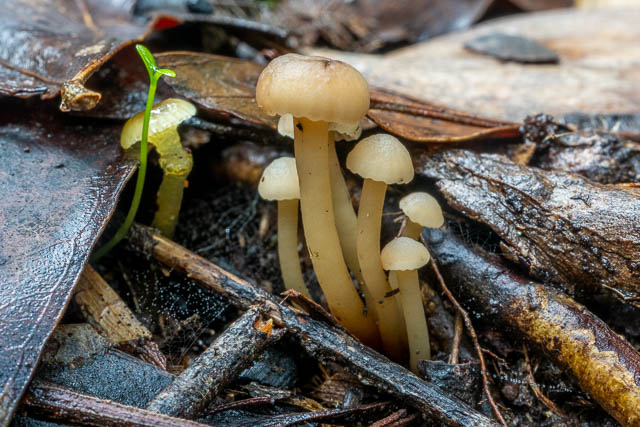
These may also be waxcaps –
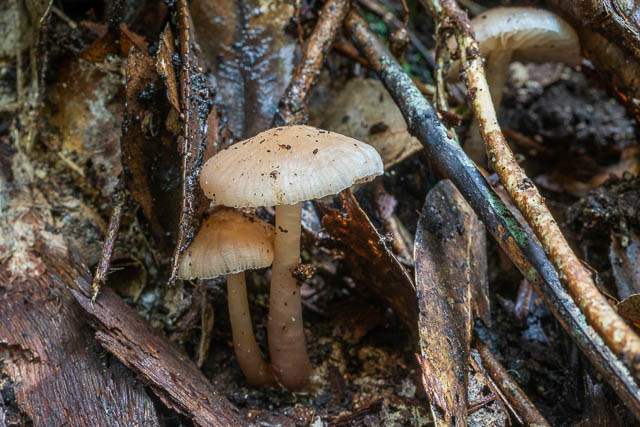
There were also a lot of corals. Here are some –
Ramaria xanthosperma var.australiana –
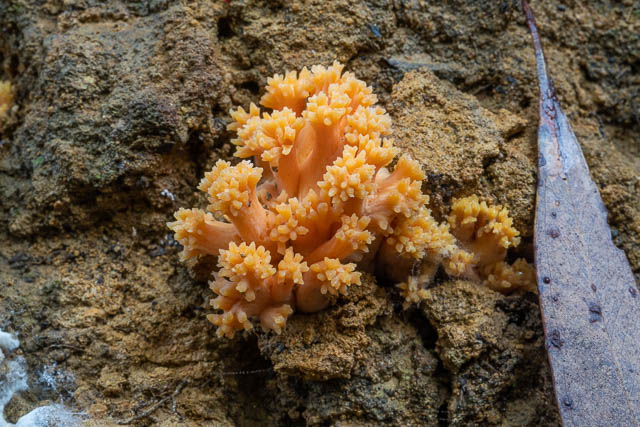
Clavaria tenuipes –
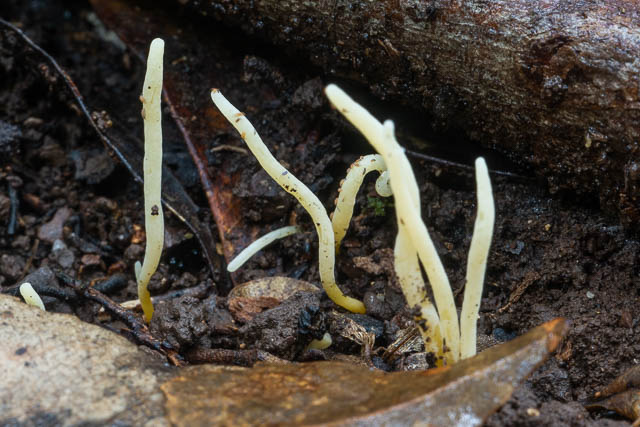
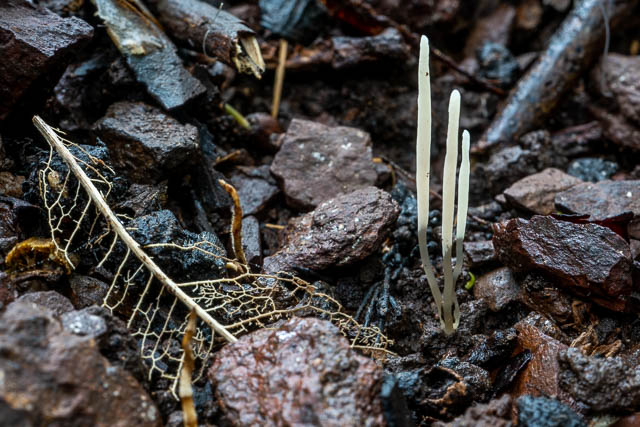
Clavaria fragilis –
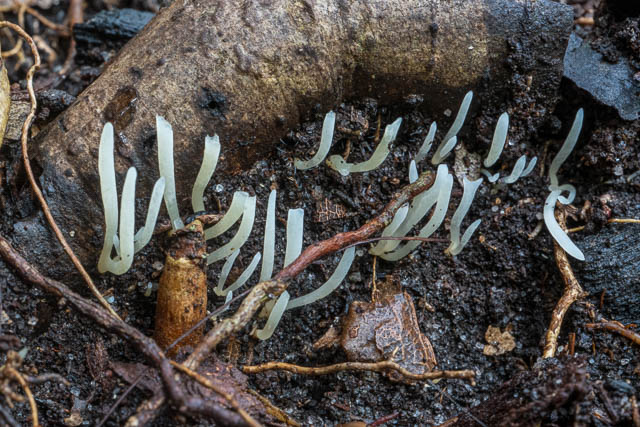
Ramaria lorithamnus –
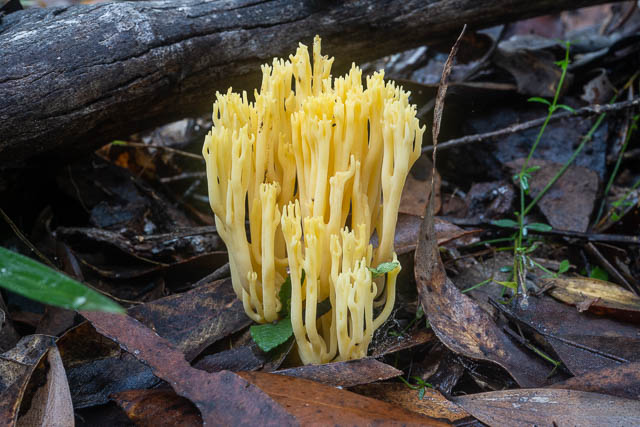
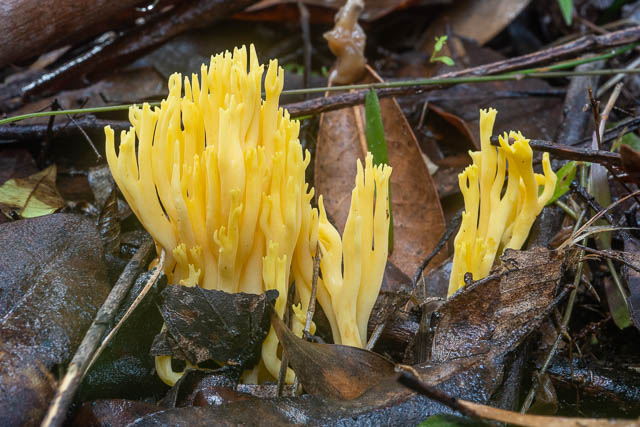
Clavulinopsis sp. –
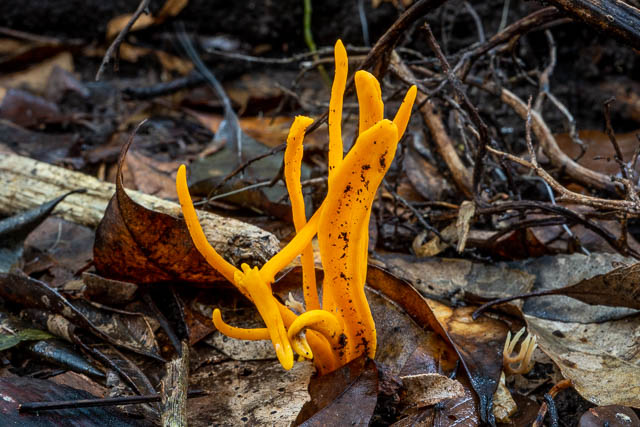
Ramariopsis crocea –
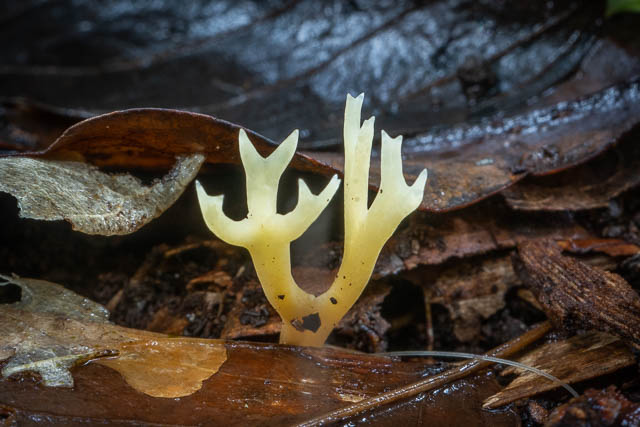
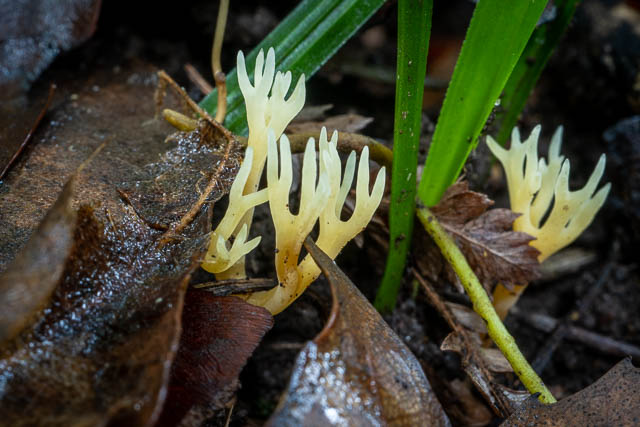
Clavulinopsis amoena –
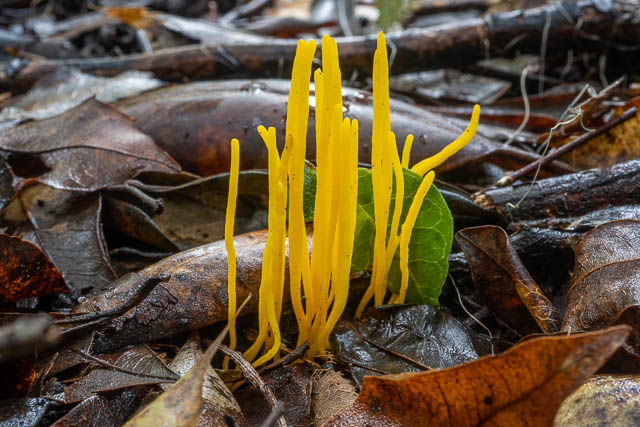
Clavulinopsis corallinorosacea and Ramaria sp.?
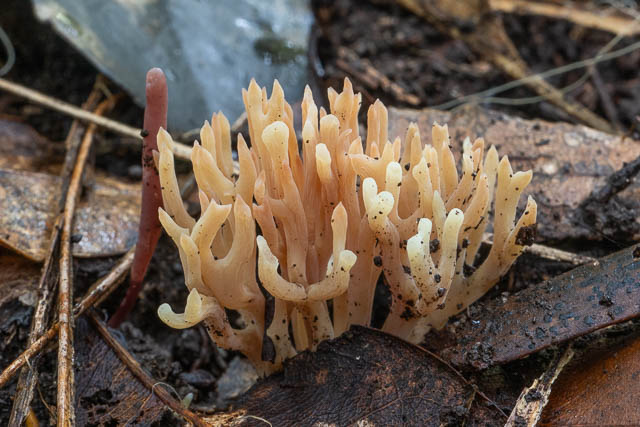
Clavulinopsis corallinorosacea and Clavaria tenuipes –
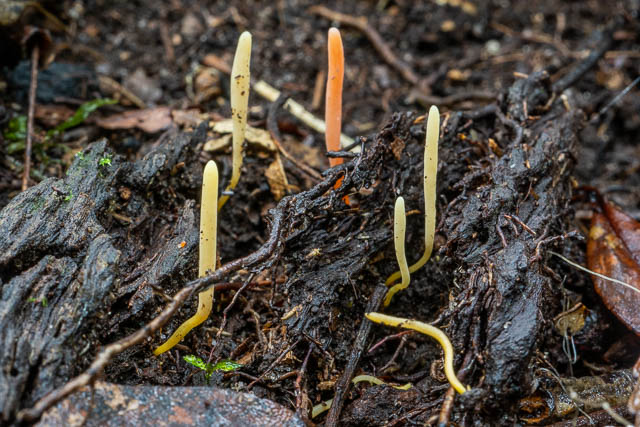
Pseudohydnum gelatinosum –
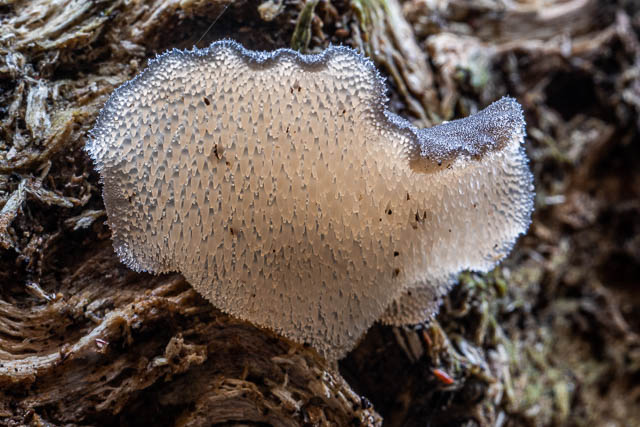
Cortinarius rotundisporus –
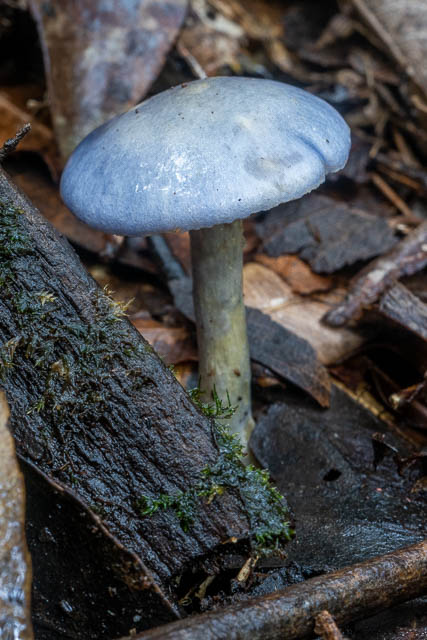
Gymnopilus junonius –

Mycena sp. –
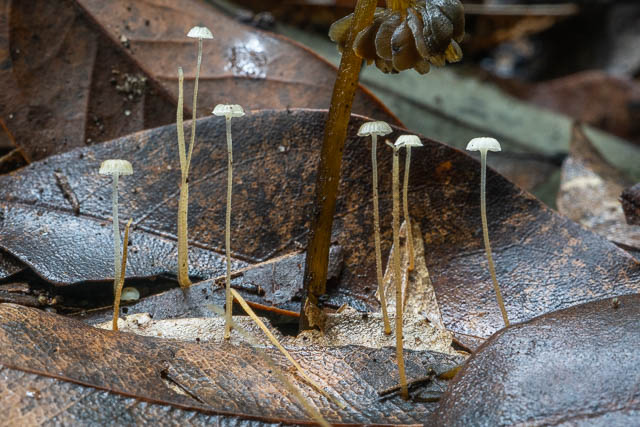
And now for some Ascomycetes.
I am not sure about this first one, which I have seen before. They were growing on a log and were quite small. The could be Stictis radiata but don’t look quite like that species in online photos.
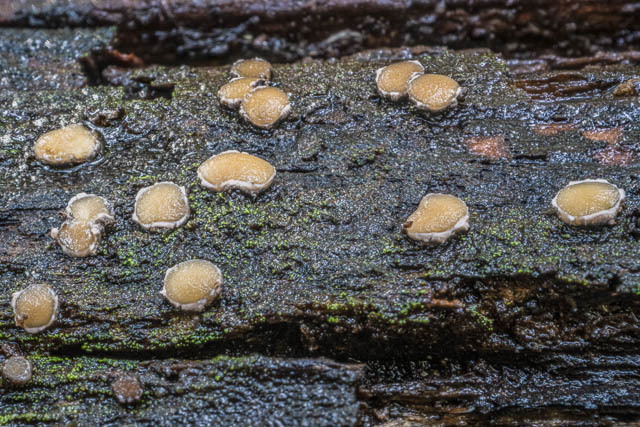
Jafnea pallida –
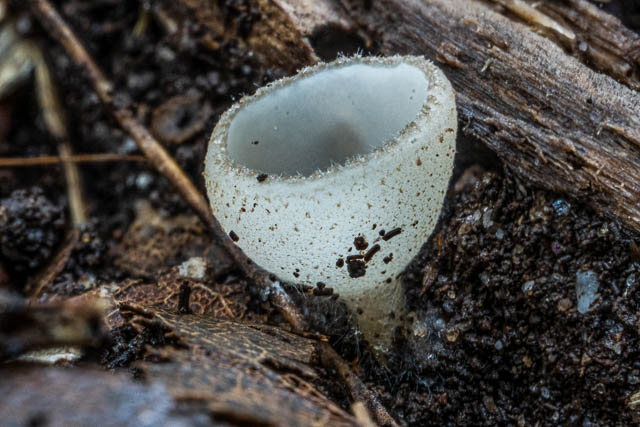
Aleuria aurantia –
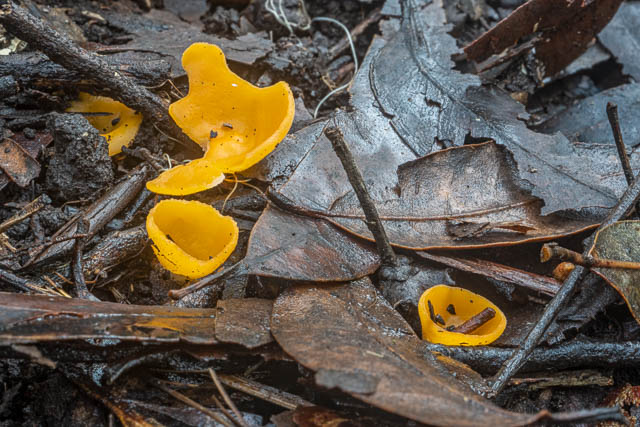
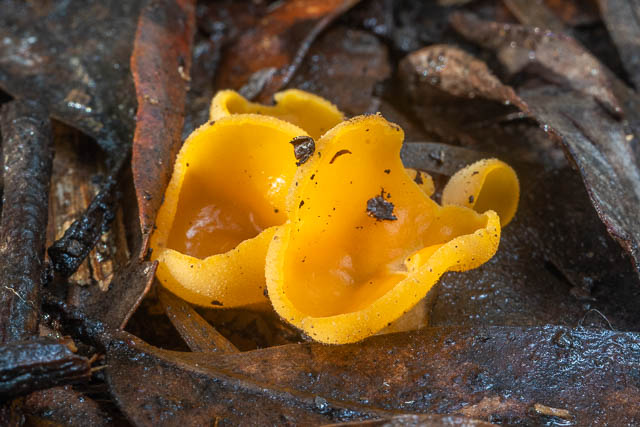
I also saw a lot of Greenhood Orchids on the Forest Path. See are some –
Pterostylis grandiflora –
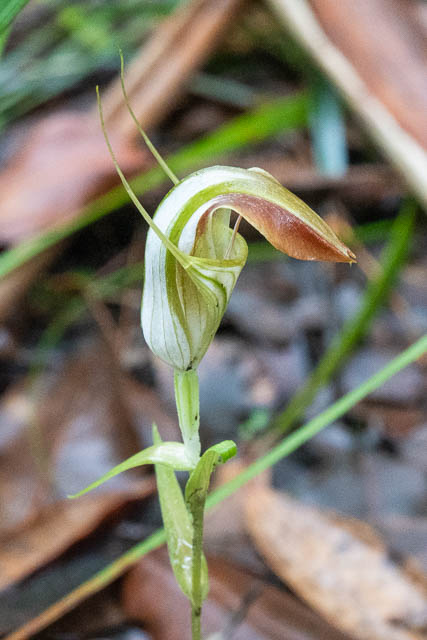
Pterostylis nutans –
